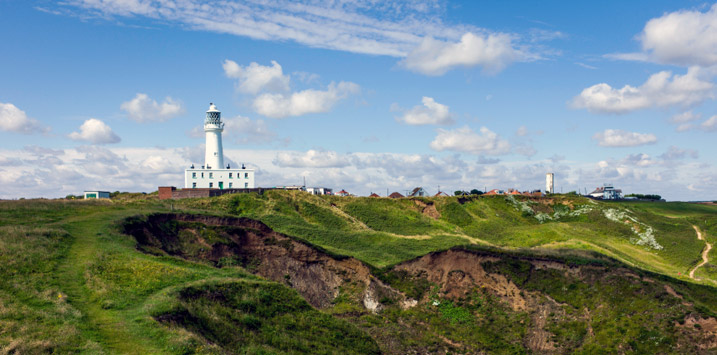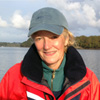
Happy 500th birthday - Trinity House
This year on 20 May 2014, the Corporation of Trinity House celebrated its 500th anniversary. It is an incredible five centuries since, in 1514, Henry VIII awarded the Royal Charter that established this prestigious organisation. During that time they have seen and influenced many advances in technology which has impacted on the way they operate, but their remit has always been to serve the mariner, looking after his safety and well being, no matter whether he is working, training or retired.
Today the corporation has three main functions:-
- The Lighthouse Service for England, Wales, the Channel Islands and Gibraltar – responsible for the provision and maintenance of navigational aids, such as lighthouses, light vessels, buoys and radio and satellite systems.
- Charitable Organisation – dedicated to the safety, welfare and training of mariners, it also contributes in the region of £4m annually to marine charities.
- Deep Sea Pilotage – providing expert navigators for ships trading in Northern European waters.
How It Began
It was in 1514 that Thomas Spent, Master of Trinity House and his Court of Brethren, (a fraternity of mariners), laid a petition before King Henry VIII expressing misgivings about the pilotage of ships in and out of the Thames. This lead to a Royal Charter being granted in May 1514, from which time the Brethren acted as Nautical Assessors to the Admiralty Court. Thomas Spent, who was later knighted, was sailing master of Henry’s flagship Mary Rose and the Henry Grace a Dieu.
In 1566 Queen Elizabeth I’s Seamarks Act enabled Trinity House to erect beacons and signs for the sea…. “whereby the dangers may be avoided and escaped and the ships the better come into their ports without peril.” The first lighthouse dates from 1609 when a pair of wooden towers, with candles to illuminate them, were built near Lowestoft, after an increasing number of ships had been lost along the Newcastle to London coal route. During the next 200 years lighthouses were built all around the coast of Britain, making them safer for mariners. In 1836 Trinity House accepted powers to levy out the last private lighthouse owners and began refurbishing and upgrading its lighthouse estate.
The headquarters of the corporation was originally the present Trinity House building, designed by Samuel Wyatt and built in 1796, with views over Trinity Square, The Tower of London and The River Thames. Today this is retained as a small secretariat while the operational headquarters are in Harwich, supported by depots in Swansea and a flight operations base at St Just. It also owns three vessels, the two large tenders, THV Patricia and THV Galatea, and the Rapid Intervention Vessel THV Alert. The company has also owned a number of properties for its charitable purposes, including an estate at Newington, (now named Trinity Village) and almshouses at Deptford, Mile End and Walmer.
During the First World War, the Corporation served a number of functions: it buoyed shipping lanes and naval operations and moved light vessels. In the Second World War it kept sea lanes marked and lighted for Allied convoys and its Pilotage Service guided ships to their ports in the hazardous conditions. 73 lighted buoys and 2 light vessels were put into operation for the D-Day landings and the Trinity House pilots were responsible for all commercial vessels and many of the service vessels.
It is unfortunate that many of Trinity House’s historical records were destroyed when it suffered fires in 1666 and 1714 and bombing in 1940. The 1940 air attack was one of the most severe on the capital and the building was completely gutted. The restored house was reopened by HM Queen Elizabeth in October 1953.
By the 1960s Trinity House had licensed about 500 pilots handling around 60% of the country’s piloted tonnage and in 1987 it became a licensing authority for deep sea pilotage, passing its Direct Pilotage responsibilities to local harbour authorities. Trinity House played a major part in the design of the IALA Maritime Buoyage System, the first buoy being laid off Dover in April 1977. By 1998 the lighthouse automation programme was completed with a ceremony at the North Foreland Lighthouse.
In 2011 HRH Princess Royal became Master of Trinity House, taking over from her father HRH the Duke of Edinburgh, and she was aboard Trinity House Motor Boat No. 1 during the Diamond Jubilee procession, exercising Trinity House’s historic right to escort the sovereign when travelling by ship in the territorial waters. The role of master has been filled by other prestigious names in history including the diarist Samuel Pepys, the Duke of Wellington and William Pitt the Younger.
The 500th Birthday Celebrations
A charity abseil event
In order to raise funds for its benevolent work, the corporation is holding abseil events at three of its lighthouses; Saturday 5th July at Southwold (Suffolk), Friday 11th July at Nash Point (Glamorgan) and Saturday 19th July at Portland Bill (Dorset).
A presentation
To mark its 500 years service to the Admiralty Court, the Corporation of Trinity House was presented, on 12 February, with a replica of the Admiralty Oar Mace. This will be displayed in the Tower Hill building.
An open day
A unique invitation was issued to the general public to an open day at Trinity House, to discover the treasures and artefacts preserved there. There will also be an opportunity to visit on Saturday September 20th as part of the city-wide Open House London promotion, which provides rare public access to around 800 exceptional London buildings.
Trinity House Hub
The Mariners’ Park at Wallasey on the banks of the Mersey has been providing support and services to mariners in need since 1857 and provides accommodation for 160 retired seafarers and their dependants. The Trinity House Hub is a new state-of-the-art welfare facility, opened by the Princess Royal, containing apartments and community facilities including a café, spa, gym and rooms for meetings and hobbies. The programme also includes a new care home opened in 2002
What about the future
As an island nation the sea is bound to continue to play a vital role in our way of life. Over 90% of goods entering the UK have spent all or part of their journey travelling by sea and it is thanks to our mariners and the work of Trinity House that a world class service is carried out on a daily basis. Hopefully Trinity House will carry on its good work and continue to look after our maritime heritage and its mariners well into the future.

Author – Dee White